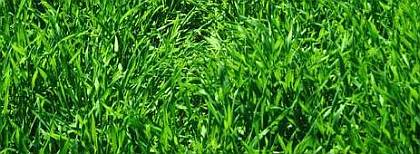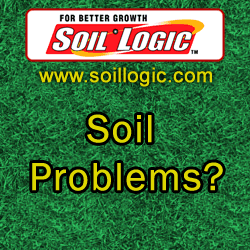Chemical Fertilizer: A Guide
to the Good, the Bad, the Ugh-ly
Using Chemical Fertilizer? Heed This Advice.
Picture yourself hungry on a busy day. You won’t be able to stop for a meal. You grab a candy bar. It takes the edge off. You go strong for a while. Then you crash.
Picture your lawn. It’s not very green. You give it a dose of super-green-up-nitrogen-fertilizer. You just gave it the equivalent of a candy bar.
It can be that bad. Chemical fertilizer is a short-term solution for a long term need. This guide is a caution, not an indictment against this type of product.
If using it is your best option, the objective is to lessen any negative impact. You can learn to do that and get better, long-lasting results with the following information.
FTC Disclosure:
If you make a purchase via a link on this site, I may receive a small commission on the transaction - at no added cost to you.
Sponsored Links
How Does Chemical Fertilizer Affect Plants?
These best selling products from the chemical companies are a synthetic source of nutrients. Grass and vegetables are the hungriest of all the plants in your garden. Nutrients in the soil may not be readily available to them. The plant’s growth or appearance then suffers.
Chemical fertilizers are designed to meet those needs. It is the easiest form of nutrients to apply. They come in many different combinations of ingredients.
The advantage comes by isolating the individual nutrients. You can get different formulas and types for unique applications. Specific products are tailored for specific plants, like grass.
The good effects include the quick uptake of nutrients by grass. This depends on using the correct type at the correct time. More on this below.
The bigger question is how does a synthetic fertilizer affect things in a negative way, even canceling out the good results it produces?
Disadvantages Of Chemical Fertilizer
Why is synthetic fertilizer bad?
- It is basically salt. This is why you hear of plants being “burned” when fertilizers are applied incorrectly. Water is pulled out of the plant roots and foliage by the imbalance of salt in the soil.
- It is typically short lived. This type of fertilizer has to be water soluble to release its nutrients. The more you water, the quicker they leach out of the soil.
- It diminishes soil fertility. Chemicals push soil micro-organisms to consume organic material. If nothing is added to replenish this organic supply, the plant has even less to pull from than before.
- The frequency of application tends to increase. The cycle of needing to provide another nitrogen fix escalates as the soil fertility decreases.
- Other problems can be caused by using chemical fertilizer incorrectly. Certain lawn diseases worsen in the presence of excess nitrogen. Weeds may start to dominate the lawn, when the grass is thin to start with and the weeds are many.
When chemical fertilizers don’t work right, you lose.
When they work right, you still lose!
“The more you use, the more it grows. The more it grows, the more you mow. The more you mow…”
…the more you wonder why you wanted a lawn in the first place!
Don’t worry. There’s a way to compensate for all this.
The Composition Of Chemical Fertilizer
Will Affect The Results
Each of the nutrients in a formula is for a specific purpose. Nitrogen, phosphorous and potassium are the major elements. The N-P-K ratio you see on the label can tell you a lot. What balance is best for your lawn? (Learn about NPK Fertilizer Numbers.)
Grass needs primarily nitrogen. Chemical fertilizers supply this from different sources. The common types of nitrogen in fertilizer for turf are:
- Ammoniacal
- Nitrate
- Urea
- Water Insoluble
Each type of lawn food will have different amounts of any or all of these nitrogen sources. Why does that matter?
It affects the cost. More importantly, your results depend on using the appropriate type for your lawn. Learn the details at Labels: Understanding a List of Fertilizer Ingredients. (coming soon)
Ready For Practical Fertilizer Tips?
Reading all that information doesn’t automatically translate into making a good selection at the store. Do you want a summary of all those details?
Here are tips for evaluating synthetic fertilizer. Use them to select different products depending on the time of the year and where you need to use it.
- During cooler weather (especially lower soil temperatures) use a higher level of Nitrate nitrogen.
- Sandy soil, decomposed granite, any soil with minimal organic matter (few micro-organisms) will not get good results with high Ammoniacal nitrogen.
- Ammoniacal Nitrogen tends to last longer as it gets transformed, and it won’t wash out of the soil.
- Lots of water will flush Nitrate nitrogen quickly out of the soil. A good reason not to fertilize in hot weather if you water more.
- Water insoluble nitrogen sounds like it won’t be used. Instead, it is preferred. The higher the number the better.
- Urea nitrogen will give quick greening during warm weather. (Just don’t use it straight on your lawn, only in a blend. If you make a mistake, see tips on new grass seed!)
- Water insoluble or slow-release nitrogen will provide long-lasting green color.
More expensive chemical fertilizers usually do offer extra value to go with the price. An homogenous pellet has all the ingredients combined in one little sphere. This is the preferred form, although this feature is not always described on the bag.
The benefit is getting a balanced blend of all the nutrients everywhere you distribute the fertilizer. The alternative is to have each of the elements separate in the bag. They tend to be different sizes and weights. When you spread them, the results are very irregular.A Better Quality Fertilizer Pellet
The Very Best Chemical Fertilizer Pellet
You want that pellet to hang around as long as possible, right? Get a formula that is labeled as slow release or controlled release.
If the bag is not marked that way, observe the label for water insoluble nitrogen. This amount should be 20-30% or more. The higher it is, the longer it will last. The terms Ureaform or IBDU also indicate the pellet is coated with a slow dissolving material.
It costs more for a slow release chemical fertilizer. Yet, it is a smarter way to spend your money, and cheaper in the long run.
Here is where you save or benefit:
- It can last twice as long as a regular formula.
- It releases nutrients slow and steady. This means no excessive growth causing you to mow extra or deal with extra clippings.
- Lawn appearance stays attractive and consistent.
- Less chance of burning grass from spills or overlapping on application.
- Prevents chemical pollution in other areas from run-off.
- Fewer applications save you time.
- One ‘pricey’ application may be less than two ‘cheap’ ones.
Deal Or No Deal?
Spending money on lawn fertilizer is something that most people would prefer not to do. How do you feel then, if you go to that expense and trouble, and find the results less than satisfactory?
A frequent question at the garden center was: “Do you have any fertilizer that will really work on my lawn?” Change that profile. Start making an investment in your lawn instead of spending, or wasting, money.
- First, evaluate your fertilizer schedule. Other articles (coming later) on this site will help you follow a program that makes sense.
- Second, take a few minutes to compare chemical fertilizer labels before you buy. Be educated. Do the best for your lawn. It will pay you back in many ways.
- Third, fertilize less frequently, but more effectively, with a quality, slow-release fertilizer. Don’t bother with cheap products that will disappoint or even cause new problems.
Speaking of good, slow-release fertilizers, have you tried any natural fertilizers lately? It’s true that chemical fertilizers outsell organic fertilizers. But…
Could organic fertilizer be a smarter choice?
Before you continue with or embark on a chemical fertilizer program, consider an alternative. It’s worth looking at another option for a task that you’ll be doing for as long as you have a lawn. See the Differences Between Organic vs Non Organic Fertilizer.
Sponsored Links RELATED ARTICLES BRING ON SPRING! Products * Videos * Schedules * GuidesWhat Is Your Final Answer?
And remember about that candy bar!

A Stronger, Greener Lawn
Starts Now...
with help from DoMyOwn



